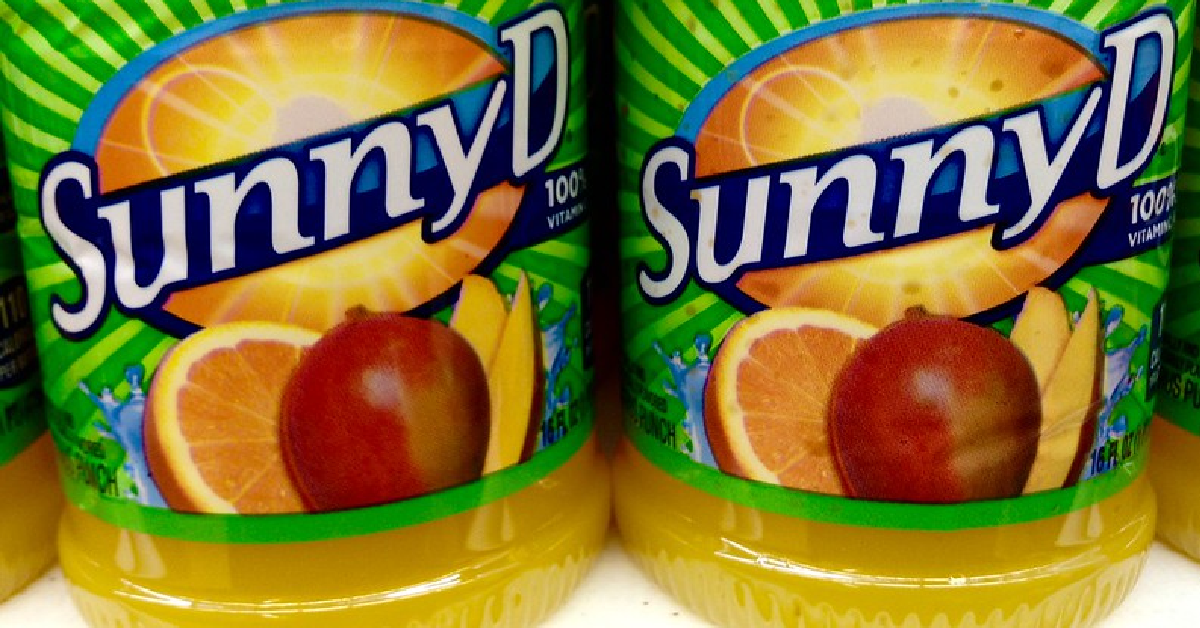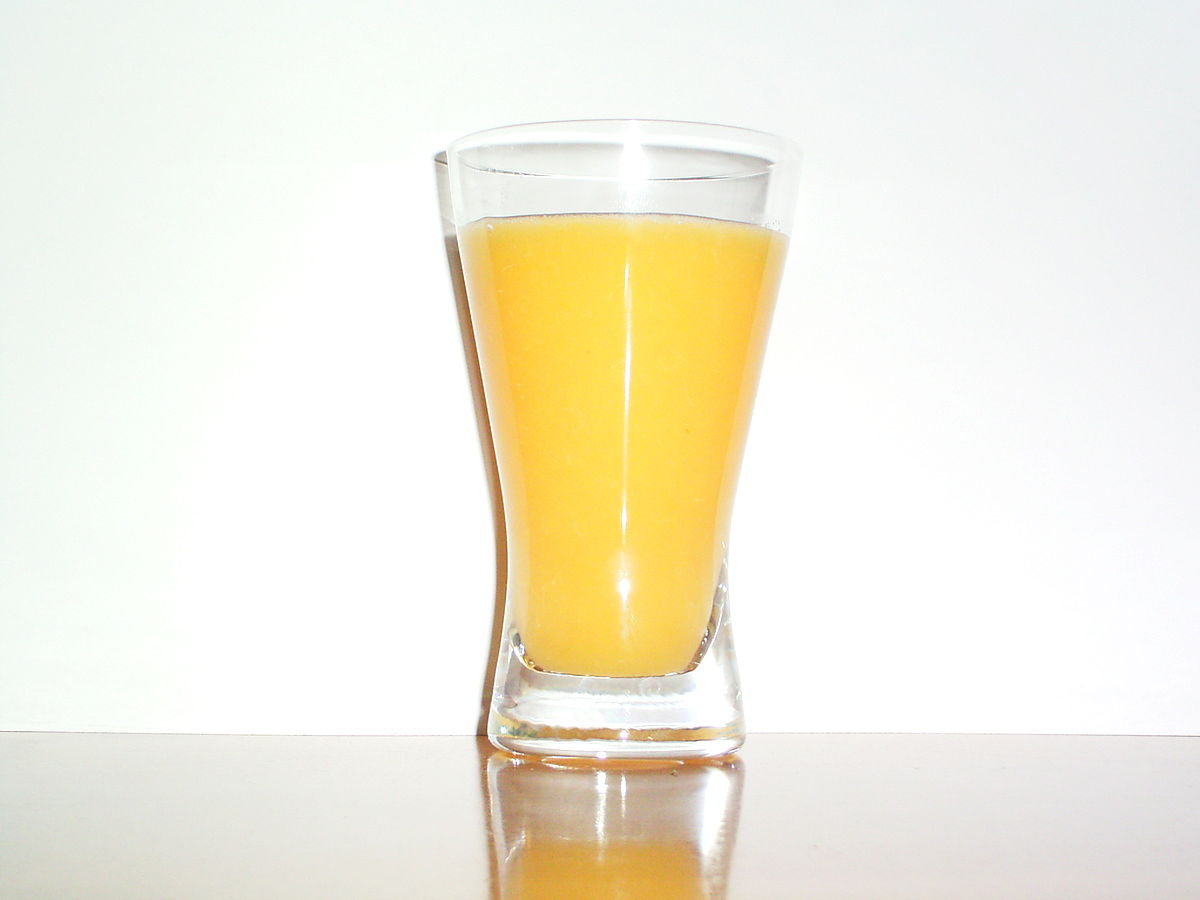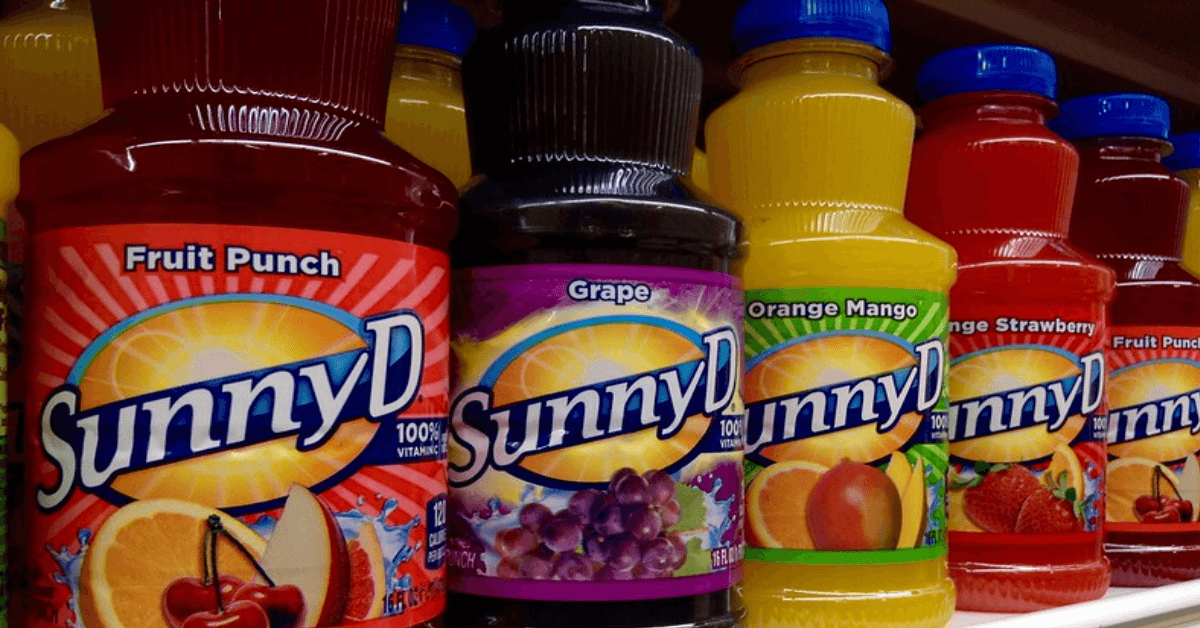Sunny D, it looks orange, it tastes orange, but it’s certainly not orange juice. While it might be juice-adjacent, if you check the ingredients label then you might be left a little confused. In fact, when food labels leave you with questions because they’re ambiguous it’s probably for a reason.
For example, the non-dairy filling of Oreo cookies is labeled as creme, even though it has no milk. The frozen treats of Dairy Queen are called soft serve and they’re actually not ice cream. So, what exactly is within a bottle of the delightful Sunny D?

According to MEL Magazine, Sunny D calls its product “orange-flavored citrus punch.” But a quick glance at the food label will reveal that Sunny D hardly contains any fruit in it.
In fact, its two main ingredients are water and high fructose corn syrup, followed by a mix of fruit juices, citric acid, sweeteners, sodium, and colorings – all of which are less than 2%. But one of the most extreme Sunny D ingredients is the ingredient called acesulfame potassium. While it’s an alternative sweetener, it has been banned in several different countries for possibly being a carcinogen.

Yes, Sunny D isn’t the greatest in terms of nutrition, but it’s no worst than other children’s drinks like Yoo-Hoo or Coca Cola. However, in an ironic twist, Sunny D markets itself with a view to nutrition. Between the orange color, the flavor, and photos depicting oranges, the marketing is to trick customers into thinking they’re purchasing real orange juice.
Both the label and the commercials make the assumption that the drink is packed with vitamins. And yes, Sunny D does contain 100% of the daily recommendation of vitamin C, however, health experts warn that its high sugar content makes the drink’s nutritional value perfunctory.

While it’s not in the drink’s commercials, Sunny D’s real content is no surprise. According to MEL Magainze, both nutritionists and members of the orange juice industry have been quite vocal for decades regarding the drink’s deceptive marketing. Sunny D did try a 70% fruit juice attempt back in 2009. However, due to a drop in sales the company reverted back to the old recipe.
Of course, it’s all up to the consumer to make the final decision. If a high sugar content is no bother then drink on, but if you’re looking for nutrition then perhaps search for a label that specifically states, “100% juice.”













